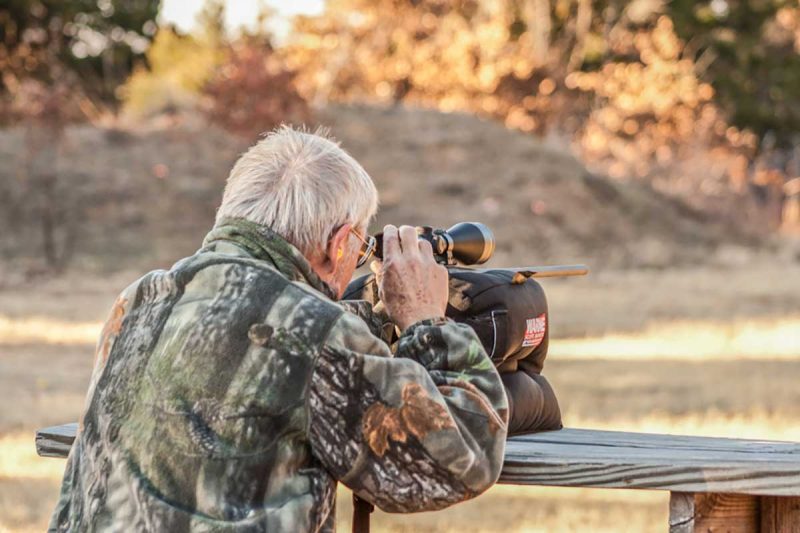Duplex Reticle Tricks for Long-Range Shooting
Richard Mann 07.24.17

Ballistic programs and ballistic reticles were designed to help shooters hit targets at long range. The ballistic programs help you predict the flight of your bullet, and ballistic reticles can do the same. Both are helpful for long-range shooting. However, for the shooting most sportsmen do, a duplex reticle and some time on the range is all you need.

With most American-made riflescopes, the reticle is placed in the second focal plane. This means that if you adjust the magnification, the size of the reticle changes in relation to the size of the target. This is the reason ballistic reticles are calibrated to work only on the highest magnification setting. The marks and dots on a reticle correlate to a measurement on the target. This is how ballistic reticles work. By placing these dots or marks at pre-calculated locations on the reticle — which match the drop of bullets fired from common, high-velocity cartridges at ever extending ranges — they can be used as additional aiming points at those predetermined ranges.
Duplex reticles go by different names depending on the manufacture, but they are all made up of a thin center wire with heavier sections on the edges. The distance between the intersection of the wires at the center, and the point where the wire thickens, can be used just like a ballistic aiming point. This distance or space subtends to, or equals, a different measurement at every range. And, this distance varies with magnification. If you know this subtension, you can use it to get hits at distance.
If you know how far your bullet drops at a certain range, and you know the subtension of this space on your reticle at that range, then you can hold accordingly. The duplex reticle can serve as a guide to help you guess the proper hold over. It can also be much more precise.

Let’s say you’re hunting with a 270 Winchester and a typical 130-grain bullet. If you zero your rifle at 250 yards — about 2.5 inches high at 100 yards — you’re about 3.25 inches low at 300 yards. This means that, ideally, you could hold center on an 8-inch target anywhere out to 300 yards and get a hit. This is just fine for big game hunting. Now, what if you need to take a shot at 400 yards? Your bullet will strike about 15 inches below the point-of-aim at that distance.
This means you’ll have to hold 15 inches above the desired point-of-impact, but at 400 yards, 15 inches can be hard to judge. If your riflescope has a duplex reticle where the distance between the intersection of the cross wires and the bottom taper point of the vertical wire equals 4 inches at 100 yards, it will equal 16 inches at 400 yards. So, all you’ll need to do is use the bottom taper point of the vertical cross wire as your aiming point and, like magic, you’re holding 16 inches high.
What if this reticle subtension doesn’t correspond to your bullet’s trajectory at that range? If you have a variable scope, then you can use the magnification dial to adjust your subtension. Here’s a trick you can use to figure this out (see illustration below).
Put a 6- to 8-inch diameter target at the top edge of a piece of poster board and set it at 400 yards. Now, with your rifle zeroed about 2 inches or so high at 100 yards, fire a three-shot group while aiming at that circle target. You’ll need to go downrange and place a stick-on target over the center of your group on the poster board. Now, go back to your rifle and hold on the top target and adjust the magnification until the taper point on the bottom vertical cross wire is centered on the bottom target.

To confirm your adjustment, leave the magnification setting there and fire another three-shot group at the top target, but use the taper point of the bottom cross wire and aim at the center of the top target. All three shots should hit the top target. Now, all you’ll need to do to shoot and hit at 400 yards is set your magnification to the determined power and aim with the taper point of the bottom cross wire.


